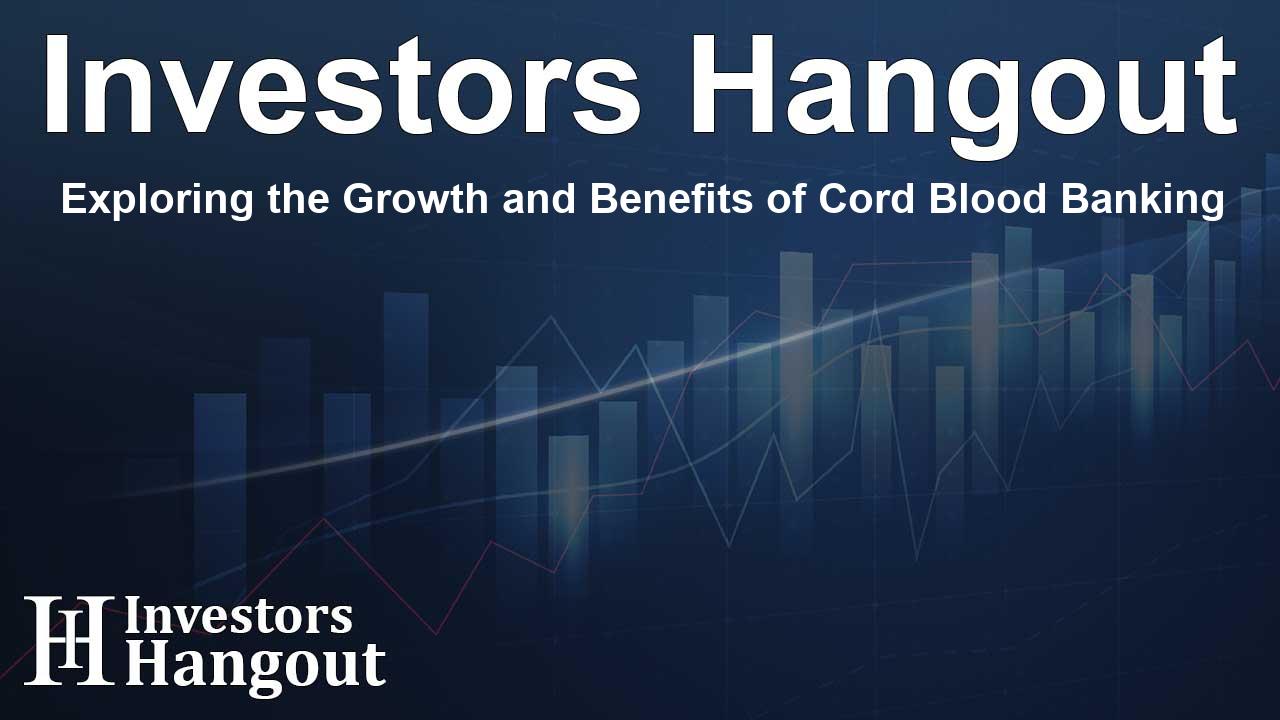Exploring the Growth and Benefits of Cord Blood Banking

Understanding the Umbilical Cord Blood Banking Market
The umbilical cord blood banking market is on a dynamic trajectory, with projections indicating it could grow to a staggering $7.9 billion in the near future. This surge is largely influenced by increasing awareness among expectant parents about the incredible benefits that come from banking cord blood, which can be pivotal in treating various medical conditions.
Key Insights into Market Growth
As of 2023, the global umbilical cord blood banking market was valued at approximately $3.4 billion and is anticipated to grow significantly at a compound annual growth rate (CAGR) of 11.00%. The process involves the collection of blood still present in the umbilical cord after a baby is born. This blood is rich in stem cells that can be crucial in treating serious health issues including certain cancers and blood disorders. Healthcare professionals typically perform the collection swiftly after delivery, ensuring that the stem cells are then processed and stored for possible future medical uses.
Driving Factors of Growth
1. Increased Public Awareness: There has been a substantial uptick in awareness surrounding umbilical cord blood banking among prospective parents. Educational initiatives, notably those endorsed by health departments, have helped inform parents about the potential life-saving benefits of stored stem cells. Events like National Cord Blood Awareness Month serve to further enhance understanding of these banking services, making the option more appealing to expectant families.
2. Emergence of Hybrid Banking Models: One of the most exciting developments in the market has been the introduction of hybrid banking models. This innovative approach combines the advantages of private storage, where families retain access to their child's stem cells, with the altruistic nature of public banking, which allows donated cord blood to assist those in need of transplants. An example is the collaboration between health authorities and private entities to establish expansive hybrid cord blood banks that serve both individual and community needs.
Market Segmentation and Players
The umbilical cord blood banking market can be segmented based on the type of bank, with public banking holding a more substantial share compared to private banking as of 2023. Additionally, services rendered in this sector, ranging from storage to processing, show a marked preference for storage facilities among users, predominantly hospitals and research institutions.
Competitive Landscape
The competitive landscape features prominent players such as Cordlife India, Biocell, CryoStemcell, NovaCord, and LifeCell, among others, each striving to provide enhanced services and innovative solutions in this burgeoning field. These companies play pivotal roles in not only promoting awareness but also in improving the infrastructure surrounding cord blood banking.
Geographic Trends in Umbilical Cord Blood Banking
In terms of geographic distribution, North America dominated the market in 2023, showcasing the highest revenue share. This trend is expected to continue, with the Asia Pacific region forecasted to exhibit the fastest growth, reflecting a broader international recognition of cord blood's medical value and the establishment of more banking facilities.
Future Outlook
The future of umbilical cord blood banking appears promising as awareness steadily climbs. More families are recognizing the crucial role that stored stem cells can play, prompting higher investments in both public and private banking solutions. Hybrid banking models are proving to be a powerful asset in meeting diverse needs, ensuring families have access to their child's stem cells while also contributing to the greater good through public donations.
Frequently Asked Questions
What is umbilical cord blood banking?
Umbilical cord blood banking is the process of collecting stem cells from blood left in the umbilical cord after childbirth, which can be stored for potential future medical treatments.
Why is cord blood important?
Cord blood is rich in stem cells, which can be used to treat various medical conditions, including certain cancers and blood disorders, making it a valuable resource for future healthcare needs.
How does hybrid banking work?
Hybrid banking combines private storage for family use with public donation options, allowing families to access their child’s stem cells while also making them available for patients in need of transplants.
Who are the key players in this market?
Major players in the umbilical cord blood banking industry include Cordlife India, Biocell, CryoStemcell, NovaCord, LifeCell, among others.
What regions are leading the umbilical cord blood banking market?
As of 2023, North America leads the market, followed by Europe and the Asia Pacific region, which is expected to show significant growth in the coming years.
About The Author
Contact Ryan Hughes privately here. Or send an email with ATTN: Ryan Hughes as the subject to contact@investorshangout.com.
About Investors Hangout
Investors Hangout is a leading online stock forum for financial discussion and learning, offering a wide range of free tools and resources. It draws in traders of all levels, who exchange market knowledge, investigate trading tactics, and keep an eye on industry developments in real time. Featuring financial articles, stock message boards, quotes, charts, company profiles, and live news updates. Through cooperative learning and a wealth of informational resources, it helps users from novices creating their first portfolios to experts honing their techniques. Join Investors Hangout today: https://investorshangout.com/
The content of this article is based on factual, publicly available information and does not represent legal, financial, or investment advice. Investors Hangout does not offer financial advice, and the author is not a licensed financial advisor. Consult a qualified advisor before making any financial or investment decisions based on this article. This article should not be considered advice to purchase, sell, or hold any securities or other investments. If any of the material provided here is inaccurate, please contact us for corrections.
